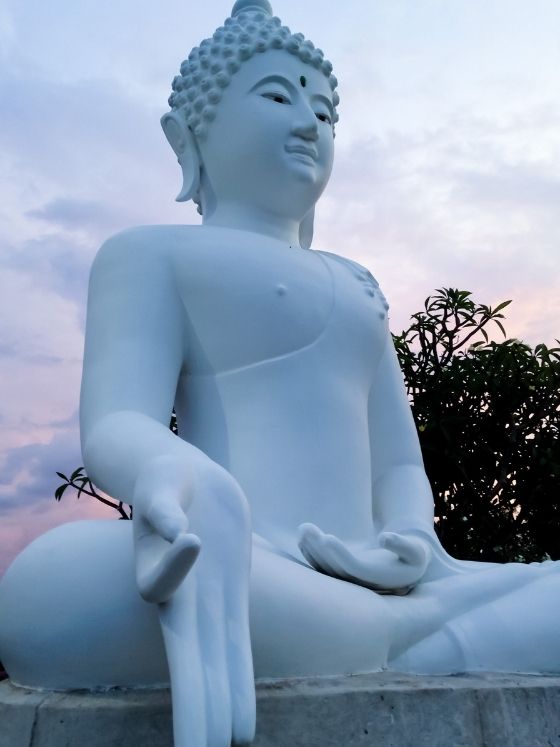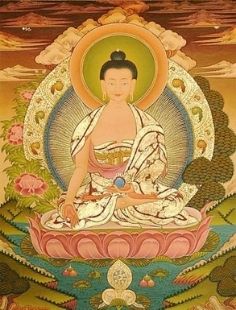
Varada Mudra, often known as the “Boon Dispenser Gesture” or “Favorable Mudra,” is a vital hand gesture in Hinduism, Jainism, and Buddhism. This historic gesture is commonly depicted in statues of gods and religious figures from these religions. It symbolizes the act of granting blessings and fulfilling the needs of individuals. Often seen in statues and religious artwork, Varada Mudra is a key image of divine generosity and compassion.
On this article, we are going to discover the which means of Varada Mudra, its position in several religions, and how you can carry out it successfully.
That means
The time period “Varada” comes from the Sanskrit phrase which means “granting of needs” or “boons,” and “mudra” means “hand gesture” or “seal.” Varada Mudra is proven by an open hand with fingers pointing downward, symbolizing the act of giving. This gesture reveals a willingness to supply blessings and fulfill needs, and it represents qualities like generosity, compassion, and sincerity. In spiritual contexts, it symbolizes the deity’s capability to grant favours and assist those that sincerely ask for it.
Symbolic illustration
Symbolically, Varada Mudra represents a gesture of giving and forgiving.
These with open hearts all the time have open arms.
~ Rumi
Simply as an open coronary heart and open arms are related, Varada Mudra hyperlinks the ideas of giving and forgiving. This mix of giving and forgiving can result in blessings for the practitioner.
The 5 prolonged fingers in Varada Mudra symbolize 5 key virtues:
- Generosity
- Morality
- Persistence
- Effort
- Meditative focus
Non secular significance
Together with being a meditative hasta mudra, there are numerous spiritual beliefs and significance related to Varada mudra. It’s seen as iconography or in statues of deities of Hinduism, Buddhism, and Jainism.
References in Hindu Mythology
In Hindu mythology, Varada Mudra is commonly proven in statues of Lord Vishnu. This hand gesture means he’s giving blessings and serving to his followers. When used with Abhaya Mudra, it reveals Vishnu and his spouse, Shri Lakshmi, offering safety and help.
In keeping with custom, Shridevi (one other type of Lakshmi) guarantees to offer folks what they want once they use this mudra. She is believed to say:
Don’t fear, I gives you the boons on your materials enjoyment!
~ Shri Lakshmi
The significance of Varada Mudra is talked about in previous Hindu texts just like the Pancaratra, Shilpashastra, Padmasaṃhitā, and Vaikhanasa-agamas.
In Buddhist Faith
In Buddhism, monks and different practitioners use Varada Mudra in religious rituals and workout routines to boost focus. It’s generally featured in Buddha statues from Southeast Asia, making it one of many well-known Buddha mudras.
In India, Varada Mudra can be depicted in pictures of Bodhisattva Avalokitesvara from the Gupta interval, which dates again to the 4th or fifth centuries.

Picture Supply: buddhism.redzambala.com
One other vital Buddhist determine typically depicted holding Varada Mudra is Ratnasambhava. In Vajrayana Buddhism, Ratnasambhava is among the 5 Dhyani Buddhas. He’s proven with Varada Mudra in his proper hand, whereas his left hand rests on his lap, holding a shining jewel. This symbolizes Bodhichitta, which represents the best worth in Buddhism.
Varada Mudra is believed to unlock the knowledge of equality and assist stop the delusion of satisfaction.
Practising this mudra throughout meditation can result in a affluent and fulfilled life, bringing a bathe of blessings.
Tips on how to do Varada mudra(steps)
- Sit comfortably in a meditative posture akin to Sukhasana (Straightforward Pose), Padmasana (Lotus Pose), or Swastikasana (Auspicious Pose)/
- Preserve your backbone and neck erect.
- Relaxation each palms in your knees, with the palms going through upwards.
- Prolong your proper hand downward with fingers pointing to the bottom.
- Calm down your left hand in your lap or knee.
- Keep a delicate breath, inhaling and exhaling slowly.
- Focus in your inside self and witness your ideas and emotions.
- Observe this mudra usually throughout your meditation classes for the very best outcomes.
Additionally Learn: Abhaya Mudra (Gesture of Fearlessness)
Time & Length
- Superb Time: Observe Varada Mudra within the morning between 4 am and 6 am for the very best outcomes. That is when the thoughts is most alert and centered.
- Length: Goal for 10-20 minutes day by day. You are able to do this in a single stretch or in shorter classes all through the day. Consistency is essential to gaining the advantages of the mudra.
Precautions
- Be mild along with your fingers and arms to keep away from pressure or harm.
- Keep an erect backbone to forestall again discomfort.
- Begin with quick follow classes and steadily improve the length as you develop into extra snug.
Uncomfortable side effects
Varada Mudra has no recognized unwanted effects and is mostly secure to follow. For those who expertise any discomfort, regulate your posture or seek the advice of a yoga skilled.
Varada Mudra and abhaya Mudra
Varada Mudra is commonly practiced alongside Abhaya Mudra, the gesture of fearlessness. Visually, Abhaya Mudra is the precise reverse of Varada Mudra, with the palm open and fingers prolonged upward.
Mixture side
Varada Mudra represents the divine capability to satisfy the believer’s materials needs.
Whereas it’s pure for people to hunt materials pleasure, the expertise of liberation within the afterlife is taken into account extra vital than earthly possessions.
Usually, the precise hand is extra actively used, which is why the numerous gesture of Abhaya Mudra (symbolizing safety and fearlessness) is carried out with the precise hand, whereas Varada Mudra is carried out with the left.
In Japan, training Varada Mudra together with Abhaya Mudra is named Segan Semui-in or Yogan Semui-in.
Advantages of varada mudra
- Cultivates optimistic attitudes akin to generosity, endurance, and morality
- Empowers forgiveness and aligns with Buddhist teachings
- Brings sincerity and compassion into life
- Fulfills needs and promotes positivity
- Enhances focus and psychological readability
- Calms the thoughts and alleviates anxieties associated to wealth and materials issues
Conclusion
Varada Mudra is greater than a hand gesture; it’s a symbolic follow that embodies the spirit of generosity and blessing. Whether or not in meditation or day by day life, this mudra encourages a compassionate and giving nature, serving to practitioners join with their religious aspirations and fulfill their deepest needs.

